The Lee Family of Stratford Hall
Generations of the Lee family were influential, respected, and politically-minded. Both the men and women of the family were important in the founding of our nation, the spread of patriotic ideals, and the Revolutionary War effort.
The Lee Women
The Lee women were influential and active during a revolutionary time in history. Not only were they successful managers and stewards of property, they were also involved in broadening the application of revolutionary ideas, expanding women’s rights, and the founding of our country.
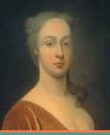
English-born Anne was the daughter of London publisher Francis Constable and Alice Owen. She emigrated to British America and married English-born Richard Lee ‘The Immigrant,’ whose political competence and shrewd business sense were rewarded with significant land holdings. Together Anne and Richard flourished and became founders of the Lee dynasties of Virginia and Maryland.
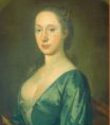
Virginia-born Laetitia was the eldest daughter of influential politico Henry Corbin and Alice Eltonhead. Laetitia married ‘the Scholar’ Richard Lee II of Westmoreland Co., who was very active in the provincial government and King’s Council. Laetitia and Richard were able stewards of the family name and fortune and were buried in the family cemetery at Machodoc (now Burnt House Field).
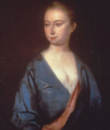
Hannah was the daughter of Philip Ludwell II and Hannah Harrison of Green Spring plantation near Williamsburg, VA. Hannah brought considerable social and financial resources to her 1722 marriage with Thomas Lee, grandson of Richard ‘The Immigrant.’ Together Hannah and Thomas established Stratford, designed partly to Hannah’s specifications, and raised a generation of revolutionaries critical to the founding of our country.

The eldest daughter of Thomas and Hannah Lee of Stratford, Hannah managed Peckatone plantation on the Rappahannock after the death of her husband Gawen Corbin. Reared in the Anglican church, Hannah became an ardent Baptist in the wake of the First Great Awakening. As the war raged, she urged her radical brother Richard Henry Lee to broaden the application of revolutionary principles of freedom and representation to women’s rights.

The youngest daughter of Thomas and Hannah Lee of Stratford, Alice sold the prospective legacy from her father’s estate to her brother William and moved to London, where she married future physician William Shippen Jr. in 1762. The couple moved to 4th Street in Philadelphia, and their home there became the headquarters of the Stratford Lees during the Revolution and beyond. A correspondent of Elizabeth and Abigail Adams, Alice canvassed Philadelphia soliciting contributions to the war effort.

Westmoreland County native Elizabeth married Philip Ludwell Lee of Stratford with whom she had two daughters, Matilda and Flora. When the Westmoreland Association commissioned a portrait commemorating opposition to the Stamp Act, Elizabeth pledged money in patriotic support. After Philip’s death, Elizabeth was remarried to Philip Richard Fendall, and the family (minus Matilda) relocated in 1785 to a home on the corner of Washington and Oronoco Streets in Alexandria.
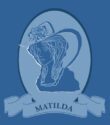
Matilda was the eldest daughter of Philip Ludwell Lee and Elizabeth Steptoe. In the absence of sons, Matilda inherited the majority of her father’s estate, including Stratford and its lands. In 1782 she married her second cousin Henry Lee III, nicknamed ‘Light-Horse Harry,’ and later gave birth to Lucy Grymes Lee and Henry Lee IV. Her son Henry Lee IV would be the last Lee to own Stratford, the ancestral home of the Lees of Virginia.
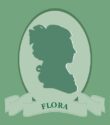
The youngest daughter of Philip Ludwell Lee and Elizabeth Steptoe of Stratford, Flora married her first cousin Ludwell Lee (son of Richard Henry Lee) in 1788. They moved into John Mill’s old manor atop Shuter’s Hill in Alexandria before Flora (like sister Matilda) died an untimely death in her mid-twenties. She was survived by her three children Eliza Matilda, Anna Cecilia, and Richard Henry.

The great-granddaughter of colonial tycoon Robert ‘King’ Carter, Ann married widower Henry Lee III at Shirley plantation in 1793. The family lived at Stratford before relocating to Alexandria circa 1811. Of their five children who survived to adulthood, four were born at Stratford, including youngest son Robert Edward Lee, commander of the Army of Northern Virginia during the Civil War.
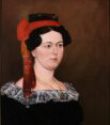
Daughter of Daniel McCarty Jr. and Margaret Stuart, Anne married Stratford-heir Henry Lee IV in 1817. Their two-year-old daughter Margaret died after a tragic tumble down the stairs in 1820. Henry lost Stratford as a consequence of litigation following his scandalous affair with his legal ward and wife’s sister Elizabeth. The marriage survived, and Anne accompanied Henry to various minor political postings before they settled in Paris, France, where both died. Stratford was sold in June 1822 to Henry’s friend, diplomat and author William C. Somerville.
The Lee Men
The Lee family men were immigrants, businessmen, entrepreneurs, scholars, and politicians. They are known for being politically radical for their time, leaders in the colonies, signers of the Declaration of Independence, and key agents of the American Revolution.
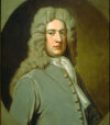
English-born Richard emigrated to Jamestown in the 1630s. He married Anne Constable while working in the offices of Governor Sir Francis Wyatt. Richard flourished as a tobacco and fur exporter on Virginia’s Middle Peninsula and skyrocketed through the political hierarchy to join the Council of State. He acquired significant land holdings and settled his wife and family at Dividing Creek plantation in Northumberland Co. Together Richard and Anne founded an influential American dynasty of leaders and radicals.
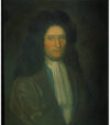
Second son of Richard Lee I and Anne Constable, Richard ‘The Scholar’ inherited a large tract of land called Machodoc in Westmoreland Co. where he established his residence and housed his considerable library. Oxford-educated Richard followed in his father’s footsteps, eventually becoming a power player in colony politics. His advantageous marriage to Laetitia Corbin enhanced his political, social, and financial clout.
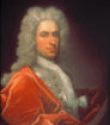
Fourth son of Richard ‘The Scholar,’ Thomas exhibited the business savvy and political acumen of his forefathers. While agent of the Northern Neck Proprietary and Naval Officer of the South Potomac, Thomas acquired The Clifts plantation in Westmoreland Co., which he redeveloped as Stratford with his wife Hannah Ludwell. Thomas was a major political force in colony politics, and his sons and daughters became key agents of the American Revolution.
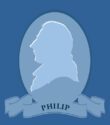
Eldest son of Thomas and Hannah Lee, Phil inherited Stratford, expanding its commercial enterprise to include a public wharf, tobacco inspection station, and thoroughbred breeding program. Phil’s appetite for luxury and sluggish disposition of his father’s estate put him at odds with his better known siblings. His daughter Matilda by Elizabeth Steptoe would inherit Stratford and bind the Stratford Lees to the Lees of Leesylvania through marriage to Henry ‘Light-Horse Harry’ Lee III in 1782.
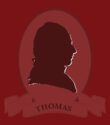
Second son of Thomas and Hannah Lee, Thomas studied law at the Inner Temple, London, before returning to play his role in Lee family resistance to British overreach. Making his home with wife Mary Aylett at Belleview plantation in Stafford Co., Thomas was a signatory to the 1766 Leedstown Resolutions and at the 1776 Virginia Convention co-authored the resolution charging Virginia delegates to the 2nd Continental Congress to propose independence from Britain. His daughter Lucinda was a noted American diarist.
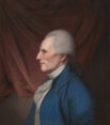
Third son of Thomas and Hannah Lee, Richard Henry was an imposing statesman renowned for his eloquence and leadership during the American Revolution. He co-authored the 1766 Leedstown Resolutions, proposed independence from Britain on June 7, 1776, served as chair of the Marine Committee during the war, was one of two Lees to sign the Declaration of Independence, and held several leadership positions in early national America. He raised a large family with first wife Anne Aylett and second wife Anne Gaskins Pinkcard on his Chantilly plantation near Stratford.
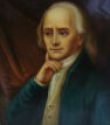
Fourth son of Thomas and Hannah Lee, Frank or ‘Loudoun’ was remembered by Samuel L. Clemens (Mark Twain) as a model of “pure” public service. He was an even-tempered member of that “band of brothers” who drove the Revolution in Virginia and one of 56 signers of the Declaration of Independence. He mentored younger brother William and collaborated with him in tobacco exports to London. Above all, Frank savored life with his wife Rebecca Tayloe on their Menokin plantation near Stratford.
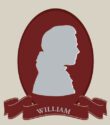
Fifth son of Thomas and Hannah Lee, William moved to London where he married his cousin Hannah Philippa Ludwell and acted as commercial agent for Lee family enterprises abroad. With the help of his brother Arthur, William was elected Sheriff of the City of London and later Alderman, platforms he used to advocate for the American cause. Continental Congress appointed William its commercial agent in France and he later received diplomatic postings to Berlin and Vienna. William died at his Green Spring plantation and was buried alongside his Ludwell grandparents in the churchyard at Jamestown.
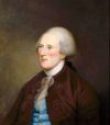
Sixth son of Thomas and Hannah Lee, the brilliant Arthur studied medicine at Edinburgh and law at Middle Temple, London. His torrent of pro-American political writings in the build-up to the Revolution made Arthur the most significant American propagandist at home and abroad. While an intelligence agent of the Continental Congress, Arthur secured the first secret shipments of foreign aid to the Continental Army. Appointed commissioner to the Court of Versailles, Arthur signed the 1778 Treaty of Alliance that brought France into the war on the American side. Arthur died and was buried at his home Lansdown in Middlesex Co., Virginia.
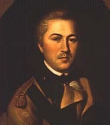
Cavalry officer ‘Light-Horse Harry’ of Leesylvania was awarded a Congressional medal for his command at the 1779 Battle of Paulus Hook. Henry married his second cousin Matilda of Stratford and later Ann Hill Carter of Shirley. The ninth governor of Virginia, Henry was a US Congressman when he delivered the famous “first in war, first in peace” eulogy for his friend George Washington. Henry Lee IV succeeded his father at Stratford when the family, including his Stratford-born half-brother Robert Edward Lee, moved to Alexandria. Dodging creditors, Henry Lee III died in exile at Dungeness on Cumberland Island, Georgia.
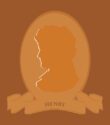
Heir of Henry Lee III and Matilda Lee, Henry IV served in the Virginia House of Delegates and as aide-de-camp to Generals Wilkinson and Izard during the War of 1812. Henry IV soon returned to Stratford, where he married the wealthy Anne McCarty and was discovered in a scandalous affair with her sister Elizabeth. He was compelled to sell Stratford as a result of litigation following the scandal. An avid and published historian, Henry IV served a brief stint as Andrew Jackson’s speech-writer and consul to Algiers before settling finally in Paris, where he and Anne are buried.
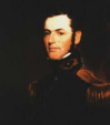
Youngest son of Henry Lee III and Ann Hill Carter, Stratford-born Robert graduated West Point and served in the Corps of Engineers prior to combat experience in the Mexican-American War. Commands at West Point and in the 2nd Cavalry followed. Robert and wife Mary Anna Randolph Custis made a home and raised their children at the Custis family seat in Arlington. Robert resigned his U.S. Army commission in April 1861 and eventually took command of the Confederate Army of Northern Virginia. He surrendered that army to General U. S. Grant on April 9, 1865, effectively ending the Civil War. In his final years, Robert presided at Washington College in Lexington, Virginia, where he is buried.

